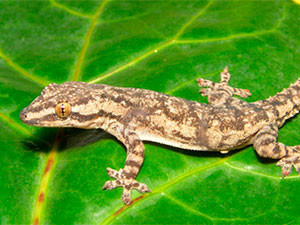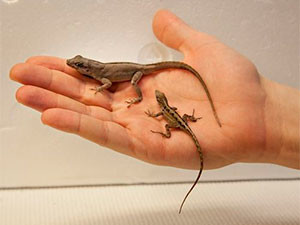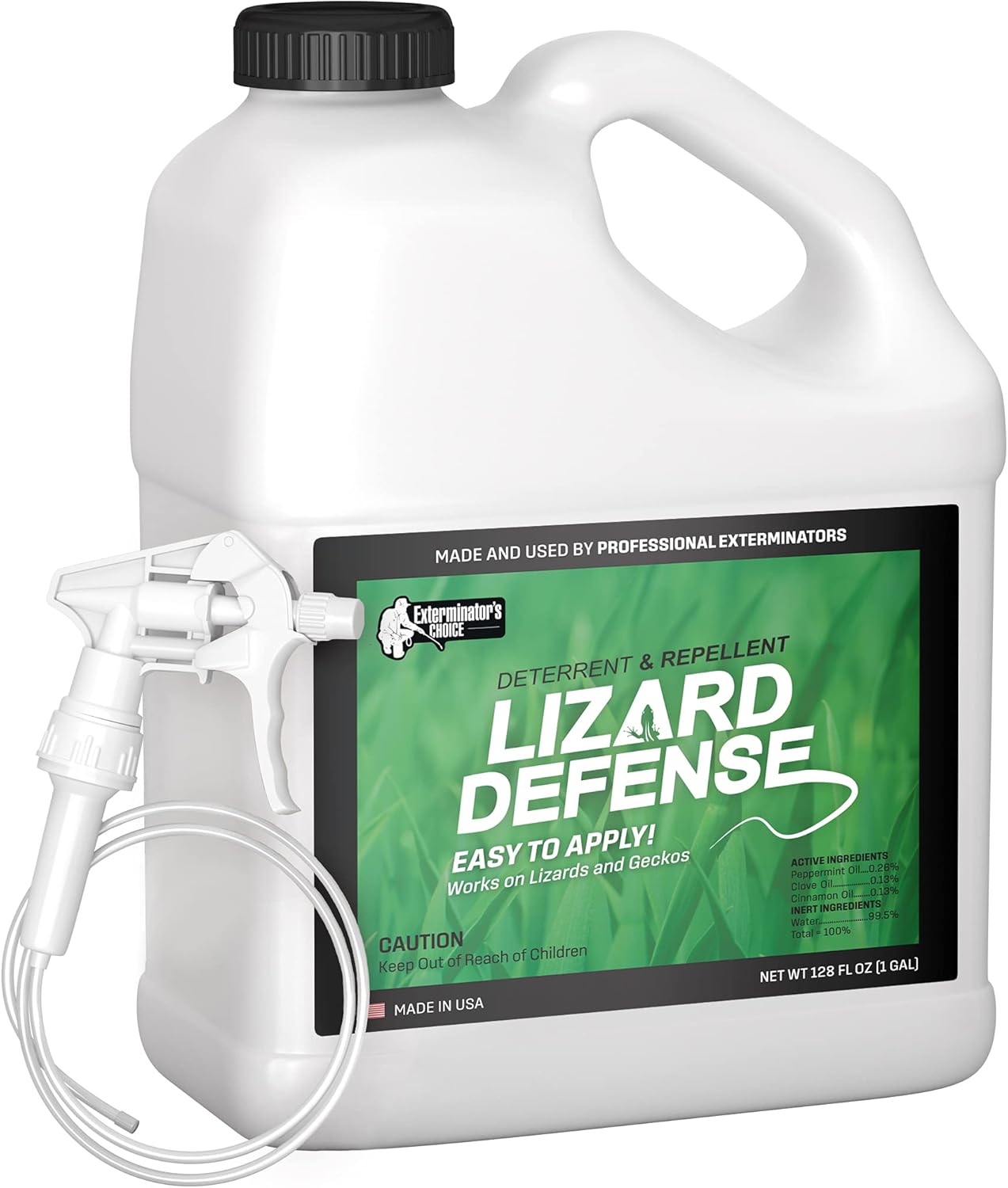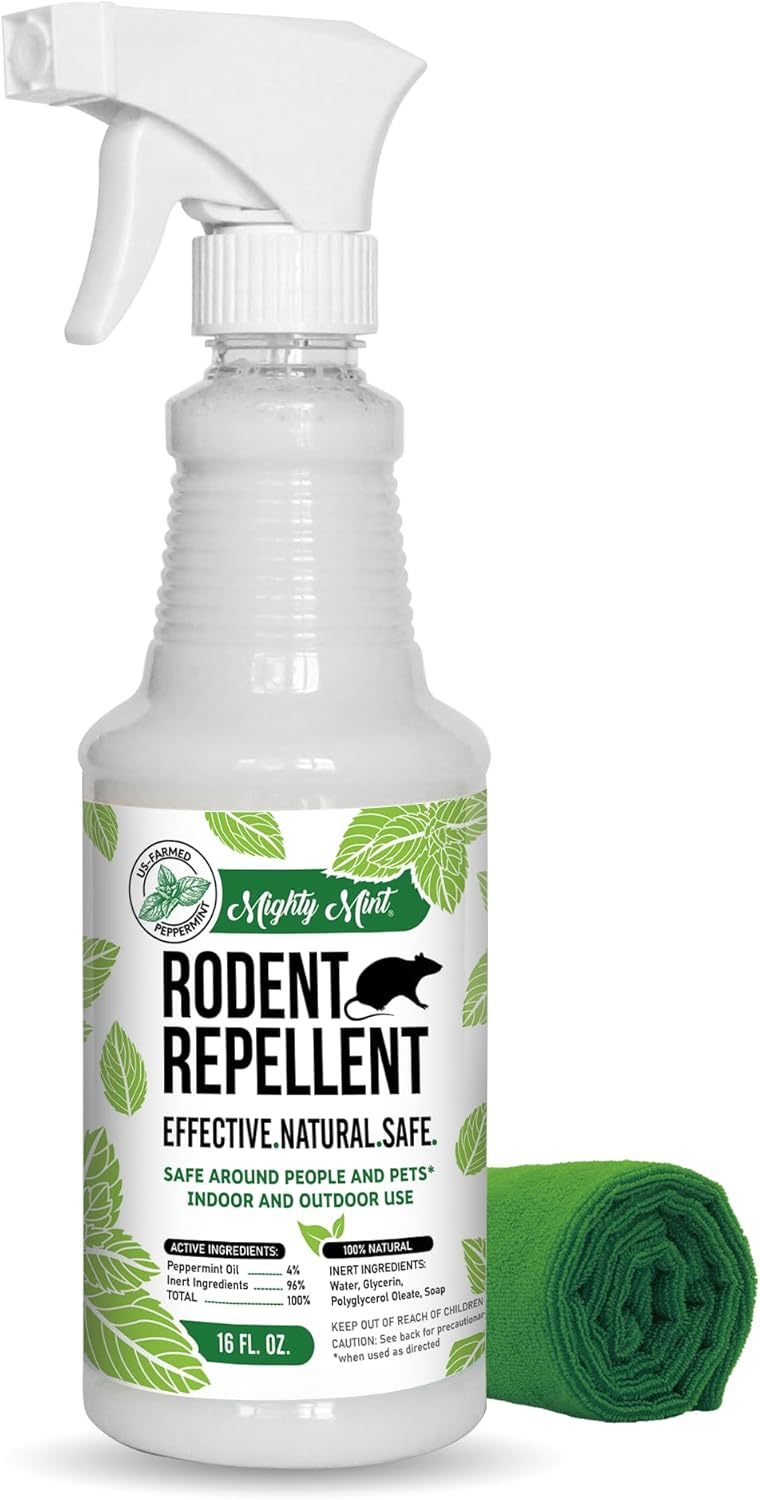Lizard Control & Removal
While lizards can help control insect populations, their presence inside homes can be unwanted. These reptiles typically enter buildings seeking warmth, shelter, or prey insects. Understanding their behavior and entry points is key to implementing effective, humane exclusion methods while maintaining the benefits they provide to outdoor environments.
Recommended Products
Exterminators Choice Lizard Defense
A natural reptile deterrent spray made with essential oils like clove, cinnamon, and peppermint that creates an unpleasant environment for lizards and geckos. This gallon-size formula provides 2-3 weeks of protection per application for both indoor and outdoor spaces.
- Natural Formula
- Versatile Application
- Extended Coverage
- Family Safe
Mighty Mint Peppermint Oil Rodent Repellent
This powerful natural rodent deterrent uses high-grade peppermint oil from the Pacific Northwest to effectively repel mice and rats. The extra-concentrated formula comes in a convenient 16oz spray bottle, offering a humane and pleasant-smelling solution to rodent problems.
- Premium Natural Formula
- Safe & Family-Friendly
- Highly Concentrated
Ortho Snake B Gon Repellent
A powerful snake deterrent in granular form that prevents snake entry and nesting around homes and structures. This odorless formula provides up to 30 days of protection per application, with each 2 lb bottle covering 1,440 sq. ft.
- Odorless Formula
- Wide Coverage
- Monthly Protection
- Pet-Safe Application
⚠️ Health & Safety Risks
- Droppings contamination
- Salmonella potential
- Food area concerns
- Stress for occupants
- Property marking
🚨 When to Call a Professional
- Large infestations
- Commercial buildings
- Protected species
- Failed DIY attempts
- Unknown species
🏥 Emergency Response
- Bite occurs: Clean and monitor
- Food contamination: Discard affected items
- Allergic reaction: Seek medical care
- Protected species: Contact wildlife authority
- Multiple sightings: Inspect entry points
🏡 DIY Removal Guides

How to Get Rid of Geckos: Complete Control & Prevention Guide
Dealing with gecko infestations in your home can be frustrating. While these small reptiles are generally harmless, they can become…
Read More →🛑 Prevention Tips

7 Best Lizard Repellents: Science-Backed Solutions That Actually Work
Dealing with lizards in your home can be frustrating. Today’s market offers many effective repellent options—from natural solutions to electronic…
Read More →🔍 Signs of Activity
- Visual sightings
- Small droppings
- Shed skin
- Wall movements
- Insect reduction
🏠 Common Entry Points
- Door gaps
- Window frames
- Foundation cracks
- Utility openings
- Wall vents
Frequently Asked Questions
Are house lizards dangerous?
Most common house lizards are harmless and non-aggressive. While they can carry salmonella, proper hygiene and avoiding direct contact minimizes any health risks.
How do lizards get in houses?
Lizards enter through small gaps around doors, windows, pipes, and other utility entries. They're attracted to insects and warm, sheltered environments.
What attracts lizards to my home?
Insects (their primary food source), warmth, moisture, and exterior lighting that attracts prey insects are the main attractants for lizards.
How do I keep lizards away naturally?
Reduce insect populations, use natural repellents like eggshells or garlic, seal entry points, and minimize exterior lighting to reduce attraction.
Do ultrasonic repellents work on lizards?
Ultrasonic repellents have limited effectiveness. Physical exclusion and habitat modification provide more reliable results.
Should I kill house lizards?
Killing lizards is unnecessary and may be illegal for some species. Humane exclusion and prevention methods are more effective and environmentally responsible.
How do I remove a lizard from my house?
Open doors/windows to provide escape routes, use gentle encouragement with a broom, or place sticky traps (checking frequently to release captured lizards outdoors).
Will lizards harm my pets?
Common house lizards pose no threat to pets. Larger species might defend themselves if cornered, but generally avoid confrontation.
Do lizards come back to the same place?
Lizards may return to areas with favorable conditions. Addressing entry points and attractants is necessary for long-term control.
How long does lizard control take?
Initial exclusion can be completed in 1-2 days, but establishing effective prevention may take several weeks of monitoring and adjusting measures.


